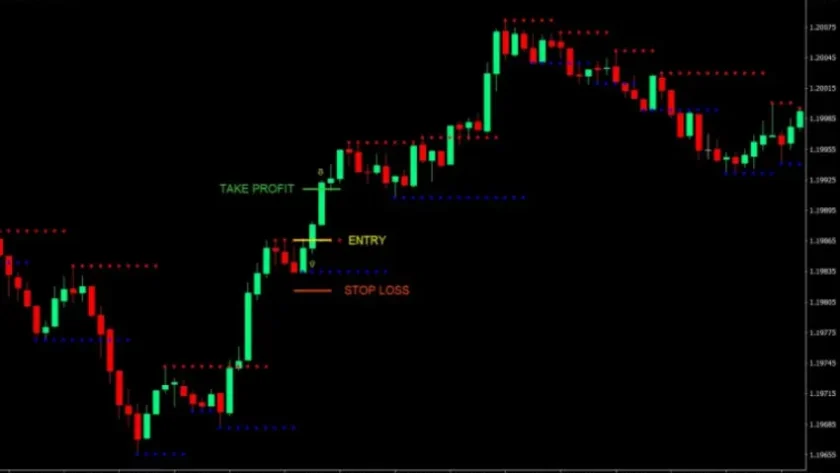Scalp trading is a high-speed trading strategy that aims to profit from small price movements in the financial markets. Scalp traders execute trades rapidly, taking advantage of quick market fluctuations that can occur within seconds or minutes.
In this article, we delve into the world of scalp trading, exploring the high-speed strategies and techniques employed by successful scalp traders.
1. The Need for Speed: Scalp Trading Essentials
- Real-Time Data: Scalp traders rely on real-time market data to make split-second trading decisions. They leverage advanced trading platforms that provide up-to-the-millisecond price quotes, order book depth, and time and sales data. Access to real-time data is crucial for identifying opportunities and executing trades swiftly.
- Advanced Trading Tools: Scalp traders utilize advanced trading tools to facilitate high-speed trading. These tools include hotkeys, customizable order entry templates, and direct market access (DMA) platforms. Hotkeys allow for instant order placement, while DMA enables direct connectivity to exchanges for faster execution.
- Technical Analysis: Scalp traders use technical analysis to identify short-term price patterns, support and resistance levels, and momentum indicators. They rely on charting tools, such as candlestick charts, moving averages, and oscillators, to make quick trading decisions based on technical signals.
- Order Types: Scalp traders employ various order types to execute trades swiftly and efficiently. Market orders provide immediate execution at the current market price, while limit orders allow traders to set specific entry or exit prices. Stop orders are used to manage risk by automatically triggering an order when the price reaches a predetermined level.
- Risk Management: Effective risk management is paramount in scalp trading. Scalp traders set tight stop-loss orders to limit potential losses on each trade. They also determine position sizes based on their risk tolerance, ensuring that potential profits outweigh potential losses.
2. High-Speed Strategies of Scalp Traders
- Scalping Chart Patterns: Scalp traders focus on chart patterns that indicate potential short-term price movements. These patterns include triangles, flags, wedges, and head and shoulders formations. By identifying these patterns in real-time, scalp traders can swiftly enter and exit trades to profit from the anticipated price reversals.
- Breakout Trading: Scalp traders capitalize on breakout opportunities where a stock or instrument breaks above resistance or below support levels. They enter trades as the breakout occurs, aiming to capture the momentum and rapid price movement that often follows the breakout.
- Range Trading: Range-bound markets present opportunities for scalp traders. They identify price ranges in which a stock or instrument is trading and execute trades near support or resistance levels. Scalp traders profit from short-term price reversals within the range, buying at support and selling at resistance.
- News-Driven Trading: Scalp traders closely monitor news releases, earnings announcements, and economic data releases. They react quickly to the market impact of such news events, leveraging the volatility to execute short-term trades. News-driven scalp trading requires rapid analysis and immediate execution to profit from the market’s initial reaction.
- Tape Reading: Tape reading involves analyzing the time and sales data, as well as Level II quotes, to gain insights into market depth and order flow. Scalp traders pay close attention to the speed and size of transactions, detecting shifts in market sentiment and potential trading opportunities.
- Momentum Trading: Scalp traders identify stocks or instruments that exhibit strong momentum, either to the upside or downside. They ride the wave of price acceleration and quickly exit the trade as momentum slows or reverses. Momentum indicators, such as the Relative Strength Index (RSI) or Moving Average Convergence Divergence (MACD), assist scalp traders in identifying overbought or oversold conditions and potential trend reversals.
- Scalping with Algorithmic Trading: Some scalp traders utilize algorithmic trading strategies to automate their trade execution. These algorithms are designed to identify short-term trading opportunities based on predefined criteria and execute trades with speed and precision. Algorithmic scalp trading allows for efficient scanning of multiple instruments and rapid decision-making.
- Scalping with Order Flow Analysis: Scalp traders analyze order flow data to gauge market sentiment and identify potential trading opportunities. By monitoring the bid-ask spread, order sizes, and the order book, they gain insights into supply and demand dynamics. This information helps scalp traders make quick decisions and capture short-term price movements.
- Scalping the Bid-Ask Spread: Scalp traders profit from the bid-ask spread—the difference between the highest price a buyer is willing to pay (bid) and the lowest price a seller is willing to accept (ask). They aim to buy at the bid price and sell at the ask price, capturing the spread as their profit. Scalp traders often target highly liquid instruments with tight bid-ask spreads for this strategy.
- Scalping in Volatile Markets: Volatile markets can provide ample opportunities for scalp traders. During periods of increased volatility, price movements can occur rapidly, presenting opportunities for quick profits. Scalp traders adjust their strategies to capitalize on these volatile market conditions while managing the associated risks.
3. Challenges and Considerations
- Market Liquidity: Scalp traders depend on high market liquidity to execute trades swiftly. Low liquidity can lead to wider bid-ask spreads and slippage, making it more challenging to capture profits. Scalp traders focus on highly liquid instruments and actively monitor liquidity levels to ensure efficient trade execution.
- Transaction Costs: Frequent trading in scalp trading can result in higher transaction costs, including commissions and fees. Scalp traders need to factor in these costs when calculating their profit targets and ensure that they don’t eat into their overall profitability.
- Emotional Discipline: Scalp trading requires strong emotional discipline, as traders face the pressure of making quick decisions under rapidly changing market conditions. Traders must stay calm, avoid impulsive behavior, and stick to their trading plan.
- Technology Reliability: Scalp traders heavily rely on technology and need stable internet connectivity, reliable trading platforms, and fast data feeds. Technical issues or outages can disrupt trade execution and potentially lead to missed opportunities or losses. Scalp traders should have backup plans and alternative solutions in place.
- Risk Management: Effective risk management is crucial in scalp trading to protect capital. Scalp traders set tight stop-loss orders and closely monitor their positions to minimize potential losses. They also avoid overleveraging and ensure that position sizes are appropriate for their risk tolerance.
Conclusion
Scalp trading is a high-speed trading strategy that allows traders to profit from small price movements in the financial markets. Successful scalp traders employ high-speed strategies, leveraging real-time data, advanced trading tools, and technical analysis techniques to make rapid and informed trading decisions.
However, scalp trading requires a unique skill set, including speed, discipline, risk management, and the ability to handle the emotional pressures of high-speed trading. Traders must continually adapt their strategies to evolving market conditions and ensure they have reliable technology and fast execution capabilities.
While scalp trading can be challenging, it offers exciting opportunities for those who are adept at making split-second decisions. Traders should approach scalp trading with proper preparation, practice, and risk management techniques to increase their chances of success in capturing profits in the blink of an eye.


